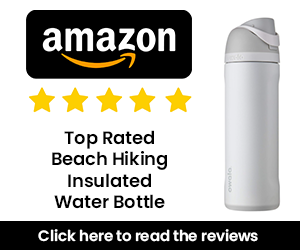The Benefits and Risks of Parasailing in Punta Cana
The Allure of Parasailing in Punta Cana
Punta Cana’s coastline, adorned with coconut palms and silky sands, provides an idyllic backdrop for parasailing. The warm Caribbean breeze, gentle waves, and clear skies make it an ideal destination for this high-flying adventure. Parasailing is not just a sport; it’s an experience that allows you to defy gravity and witness the breathtaking beauty of Punta Cana from a unique vantage point.
The Mechanics of Parasailing:
Parasailing involves being harnessed to a parachute-like wing, known as a parasail, which is attached to a motorboat by a long towrope. As the boat speeds away, the parasail catches the wind, lifting you into the air. Participants are usually secured in a harness, enjoying a bird’s-eye view of the coastline as they gracefully float above the azure waters.
The Thrills:
- Aerial Panoramas: Parasailing in Punta Cana offers an unparalleled opportunity to witness the stunning landscapes from a perspective usually reserved for birds. The vast stretch of pristine beaches, lush greenery, and the vibrant hues of the Caribbean Sea create an awe-inspiring panorama.
- Adrenaline Rush: As you ascend higher into the sky, a rush of adrenaline accompanies the sense of freedom and weightlessness. The gentle swaying of the parasail and the rhythmic sound of the waves below create a sensory symphony that heightens the overall experience.
- Photographic Memories: Parasailing provides an excellent chance to capture Instagram-worthy photos and videos. Imagine sharing breathtaking shots of yourself suspended above the tropical paradise, creating envy among your friends and family.
The Risks:
While parasailing is generally considered safe, like any adventure activity, it comes with inherent risks that participants should be aware of and take seriously.
- Weather Conditions: Weather plays a pivotal role in the safety of parasailing. Sudden changes in weather, such as high winds or storms, can pose significant risks. Operators typically monitor weather forecasts closely, but conditions can change rapidly.
- Equipment Malfunction: Properly maintained equipment is crucial for a safe parasailing experience. Malfunctions, such as a faulty harness or parachute, can lead to accidents. It’s essential to choose a reputable parasailing operator with a track record of adhering to safety standards.
- Inexperienced Operators: The level of expertise of the parasailing operator is paramount. Inexperienced or poorly trained operators may compromise safety protocols, increasing the risk of accidents. Researching and selecting a licensed and experienced operator is vital for a safe experience.
- Towing Accidents: The connection between the parasail and the towing boat is critical. If the towrope fails or if there’s an issue with the boat’s engine, it can lead to a rapid descent into the water. Proper maintenance and regular inspections of equipment can help mitigate this risk.
- Collision Risks: Parasailing involves sharing airspace with other watercraft. Accidental collisions with boats or other parasailers, though rare, can result in serious injuries. Adequate spacing and communication between operators are essential to avoid such incidents.
Safety Precautions:
- Choose a Reputable Operator: Research and select a parasailing operator with a strong safety record, experienced staff, and well-maintained equipment. Read reviews, ask for recommendations, and ensure they comply with local safety regulations.
- Check Weather Conditions: Be mindful of weather conditions. If the weather is unfavorable, it’s crucial to postpone or cancel the activity. Operators should prioritize safety over profit.
- Wear Safety Gear: Ensure that you are provided with and wear the necessary safety gear, including a life jacket and a secure harness. Confirm that the equipment undergoes regular maintenance and inspections.
- Follow Instructions: Pay close attention to the pre-flight briefing provided by the operators. Follow all instructions regarding takeoff, landing, and in-flight behavior. Communication between you and the boat crew is key to a safe experience.
- Know Your Limits: Inform the operator of any health conditions or concerns you may have. Parasailing may not be suitable for individuals with certain medical conditions, and operators need to be aware of any potential risks.
Conclusion:
Parasailing in Punta Cana is a thrilling adventure that allows you to witness the beauty of the Caribbean from a unique perspective. While the risks associated with parasailing are present, adhering to safety guidelines, choosing a reputable operator, and being mindful of weather conditions can significantly mitigate these risks. With proper precautions, parasailing becomes an exhilarating and memorable experience that adds a touch of adventure to your tropical getaway. So, spread your wings and let the Caribbean breeze carry you to new heights in the enchanting skies of Punta Cana.















